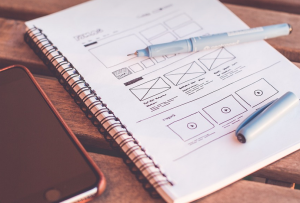
Unveiling the Journey: Understanding Architectural RFPs
Architectural Requests for Proposals, or RFPs, are essential documents that bridge the gap between an ambitious project and a talented architect. Think of it as a matchmaking process where specific architectural needs become a conversation starter. These proposals help potential architects showcase their vision, experience, and ability to translate those visions into tangible results.
A well-crafted RFP isn’t just about listing project requirements; it’s about sparking creativity and fostering collaboration. You provide your vision for the project—the scale, timeframe, budget, desired aesthetic, environmental considerations, and anything else that’s critical to its success. This sets the stage for architects to delve into their expertise and offer unique solutions.
Crafting Your Dream Project: The Anatomy of an RFP
A typical RFP is a document brimming with information designed to guide potential architects in understanding your project’s needs and potential. Here’s how you might structure it:
1. Project Overview & Vision
Start by giving your architect a clear picture of the project’s essence. Describe its purpose, desired functionality, impact on the community, and any unique challenges or opportunities that call for architectural finesse.
2. Site Context & Constraints
Lay out the foundation for your project by providing crucial information about the site itself, including location details, land use regulations, environmental considerations (like zoning, climate change impact), accessibility needs, and any existing building structures on the site.
3. Architectural Program & Design Goals
Outline the specific elements you need from an architect: What kind of space are you envisioning? What level of functionality must it possess? How important is sustainability to your project?
4. Budget & Timeline
Transparency and clarity regarding budget are crucial for attracting potential architects. Provide a realistic budget range, including any anticipated contingencies. Mention the desired timeline for completion, allowing for a broader understanding of the project’s expected duration.
5. Key Project Details & Considerations
Highlight additional considerations like: Are there specific materials or building techniques you prefer? Do you have unique sustainability goals in mind? Share any pre-existing designs, sketches, or mood boards that can guide the architects’ creative process.
6. Selection Criteria & RFP Submission Guidelines
Outline your criteria for selecting an architect: Are you looking for a firm specializing in commercial buildings, sustainable designs, historical renovations, or something else entirely? Provide clear instructions on how to submit proposals—including any specific requirements like the number of pages allowed, format, and deadline.
The Power of Collaboration: Navigating the RFP Process
An architectural RFP is a powerful tool for driving innovation and finding the optimal partner. It’s also an opportunity to initiate communication that fosters respect and collaboration with potential architects:
1. Building Relationships Before Bidding
Reaching out to architects individually, introducing your project, sharing key information, and even engaging in preliminary meetings can help you find the right fit before officially starting the RFP process. This initial contact allows for a more personalized experience for both parties involved.
2. Evaluating Proposals Carefully
Once you receive proposals, take your time to carefully evaluate them thoroughly. Don’t just focus on the final design; look at other elements like the architect’s portfolio, their approach to sustainability, and any unique experiences they offer.
3. Making Informed Decisions
The selection process is about finding the ideal partner who can translate your vision into reality. It’s a balance of technical expertise, creative vision, and aligning with your project’s overall goals.
A Lasting Legacy: The Benefits of a Well-Executed RFP
A well-executed architectural RFP is more than just a document; it’s the catalyst for a successful project. It sets the stage for:
1. Finding the Right Architect
An ideal architect will be able to offer tailored solutions, navigate complex challenges, and bring your vision to life. This is where an RFP proves its worth.
2. Increased Transparency & Collaboration
Building communication from the start will provide a foundation for a more collaborative relationship with your chosen architect, paving the way for a smoother project journey.
3. A Shared Vision & Success
An RFP helps to ensure everyone involved is on the same page throughout the process, fostering trust and setting the stage for a successful outcome.



